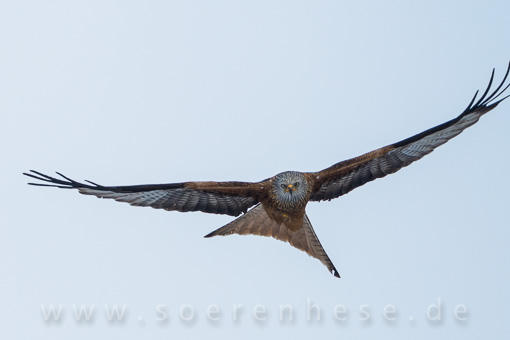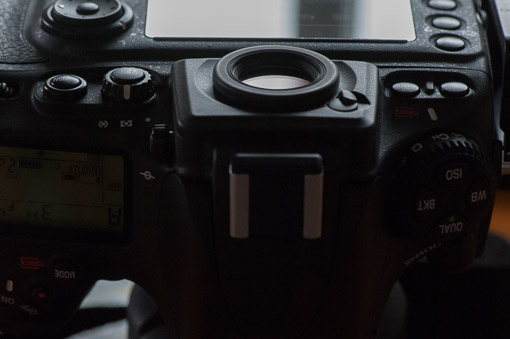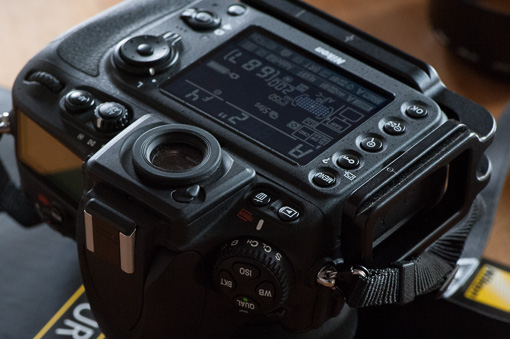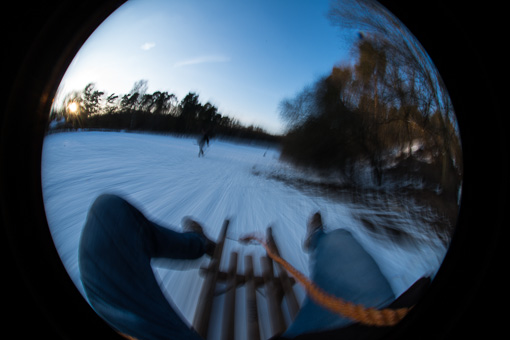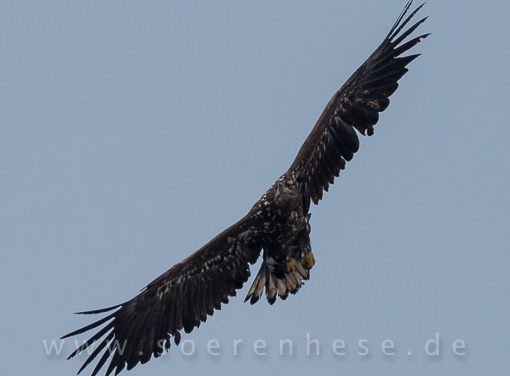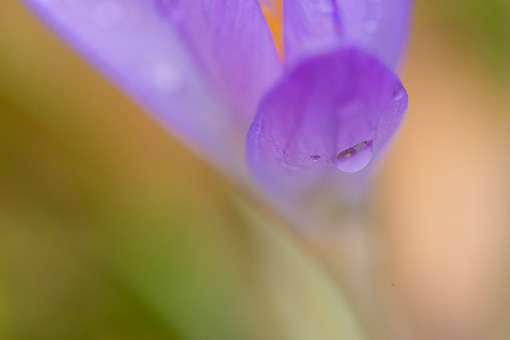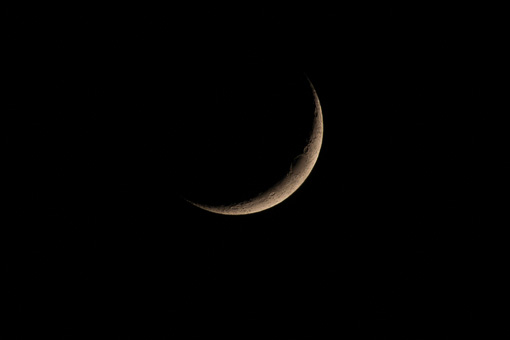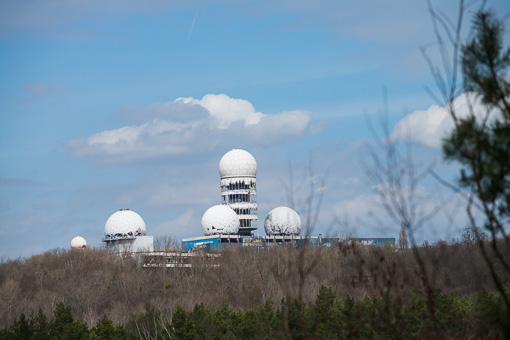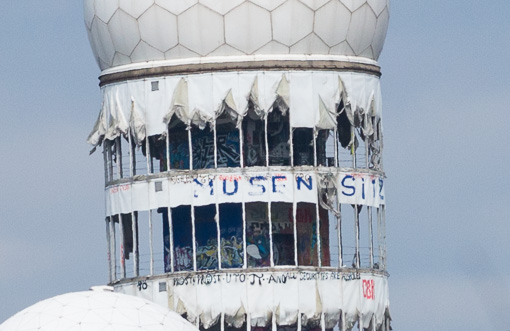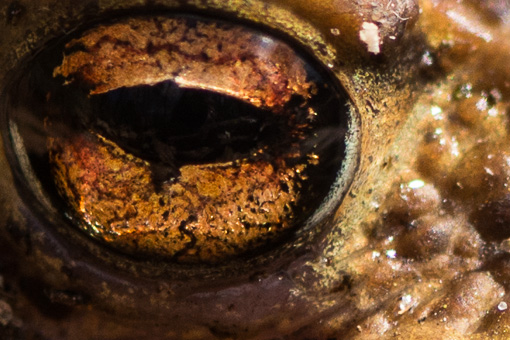D800 – Pixels vers Speed II
Some (somewhat surprising) findings from shooting with the D800.
Did about 2000 exposures with this camera lately. Mostly LBIF (large birds in flight) and snowy : ) landscapes and Kids and the 36MP definitely deliver nicely. Though I found myself shooting often in 1.2x crop mode and one of the surprises is buffer capacity there.
Surprise: THE BUFFER: in RAW 12Bit lossless compressed 1.2x crop the camera writes like hell to the card. The D800 gives r18 with this setting on the display (means: expect 18 shots before buffer is full – with Noise Reduction and other extras set to OFF) . But if you really use the full buffer you end up with 26-35 NEF exposures before the buffer is full. This is likely due to the fast write to the Lexar 1000x cards. Even under a full buffer situation the camera manages to write 2-3 fps to the card directly (until you reach 100 exposures!). So overall the buffer with the 1.2x crop mode (25MP RAW 12Bit files) is pretty impressive. That is much much better than with the D3 but will definitely depend on the card type you use. These figures above come from using a Lexar 1000x 32GB CF card. With a SD 16GB (class 10) SDHC card the buffer is much smaller. As the lossless compressed NEF format generates file sizes depending on the amount of details in your subjects/scenes the results depend also on the amount of local spectral variance you capture and therefore the final buffer size will vary. With a low (micro)contrast scene I managed to put approximately 40! RAWs into the buffer. In fact the buffer is smaller but the camera writes part of the buffer to card within the full speed sequence.
After all yes I do find 5fps somewhat limiting sometimes but this is partly compensated by the quicker AF-C 3D/51 system. The AF system is clearly a step above the D3(s)/D700 system and initial AF lock (starting up from the camera in power save mode) is much faster than with the D700 and AF-C 3D is much better in locking on specific details. Battery performance is a piece of frustration if you come from the EN-EL4a cameras. So you will want to have some spare batteries with you (MB-D12 helps). In terms of high ISO performance imo the noise is comparable to the D3/D700 series – but you can nicely downscale to 12MP and you receive a slightly cleaner image compared to the D3/D700 data (only if you play all whistles in Adobe LR for Noise Reduction before downsampling).
Sportsfinder 1.2x Crop Mode: The different crop modes are imo very handy to switch to different overview modes for faster shootings. Especially the 1.2x crop mode mimics the sports finder as you can easily see what enters your frame in a second, the additional buffer gives a lot of headroom if needed and 25MP is enough in these situations (though 8fps would be perfect for that crop mode). And the wider 35MP version is easily activated with the FN button at the front of the camera. So from an ergonomically point of view this camera is very fast to use. There only is this “we are used to 8fps” thing from the D700 that makes the whole D800 speed issue so complicated. I also cannot confirm a slow review of pictures with the D800. Scrolling is very fast, there is no delay when zooming into photographs even with 35MP full res NEFs – this works without any hiccups – note however that the Lexar 1000x 32GB is the fastest card avail right now (to my knowledge) for the D800 (compare with Rob Galbright card performance database), so the speed experience might be a different one with slower cards (especially slower SD cards).
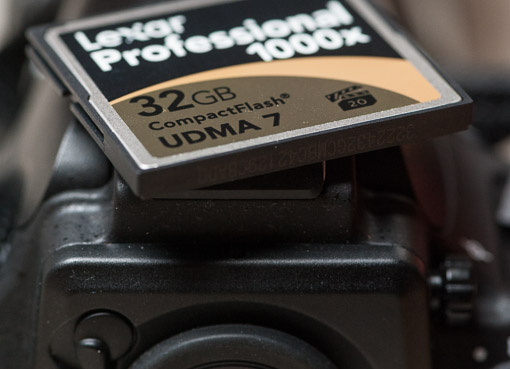 Needed and expensive … Lexar1000x CFs
Needed and expensive … Lexar1000x CFs
Rapid EasyISO switch: on the D800 models you can activate EasyISO and this makes changing ISO values as quick as changing aperture values in A Mode (ISOs are set with the thumb on the back wheel, aperture is set with the front wheel than).
Some Minor complains:
Battery door is too flimsy, slightly green tint on the back LCD compared to D3(s) (will let Nikon fix that – the last April’13 firmware release did not fix that, and NO: Liveview hue calibration wont correct the problem), red AF Sensor highlight cannot be combined with greyed out crop visualization in the viewfinder , additional battery pack doesnt give the speed boast, battery door doesnt seem to be sealed enough (can be easily fixed with some glued rubber seal), battery performance is a bit on the low side compared with a D3 (though likely pretty good if you combine with the MB-D12 and EL18), the overall shape of the D700 fits better into my hand – ergonomically this is a step back but your mileage may vary – this is subjective. Overall the shape of the body is to much compressed imo. The front buttons and dials are sitting very close together and its pretty frustrating to open the 10pin connector cap when a large lens is mounted. Try this with gloves on – likely impossible to do. I just would have preferred they kept the D700 body form and layout.
Lenses: You will have to reevaluate what lens is a performer, but to sum things up the recent f2.8 pro lenses work very well and deliver crisp sharpness. But my old 70-200 AFS now shows lots of CAs – easy to correct in Post but the sensor is demanding. I tend to close the aperture for critical sharp exposures one more stop now – therefore it helps to know where the best aperture of your lens sits. The Nikkor 20 mm f2.8 AIS performs somewhat disappointing and repeats my feelings from the D3. The wide angle lens situation is the most problematic with the D800. One should upgrade to the most recent optical designs. Those that take technique serious will love to see how it pays to use MLU and a cable release. So yes if you are willing to work on your habits – this is the right tool. Should have been sold by Nikon together with the dedicated RRS L-plate because you will need that one definitely with this camera.
Overall: the D800 is a very powerful and speedy package (if used with the fastest CF cards available) and provides a variety of options to create various file sizes – though unfortunately without any RAW binning options. I am looking forward to put the camera through its paces on the water soon. The data-space-need complaints on the net are exaggerated imo, most of the recent new cameras use 24 MP sensors and lossless compressed formats give all the freedom to reduce the file size (if wanted). If you are working with 2-3 year old computer system and have some TB external disc space you will likely be in no hurry to change the setup – although be prepared that the workflow slows down. The most recent D800 firmware release seems robust and so far I have no operational problem.
Nikon D800 with RRS L-plate attached.
Best documentation on the net is imo (and in that order):
– Thom Hogans Site and Review (and especially his eBook)
– PhotographyLife.com Review of the D800/e
– DPReview on the D800/e
UPDATE: 14.9.2013
The camera rocks, after using the camera on various events I can say that I basically always prefer the D800 over the D3. There is so much more detail within the full res RAW files. It is just mindblowing how you can create perfect compositions when you (originally) messed it up when shooting the image. And you WILL mess with some compositions when you are shooting from a moving boot between waves. The camera has also wonderfull high ISO perfomance and managed to survive in salty offshore conditions when I was sooting a recent baltic sea yachting event. I would immediately buy another D800 if mine fails. The D3 will however stay as I like to have a camera with me that is build like a tank. The D800 is unfortunately not build in that way.
Some recent shots with the D800:
With shaved Nikkor 10.5 mm f2.8 ED

